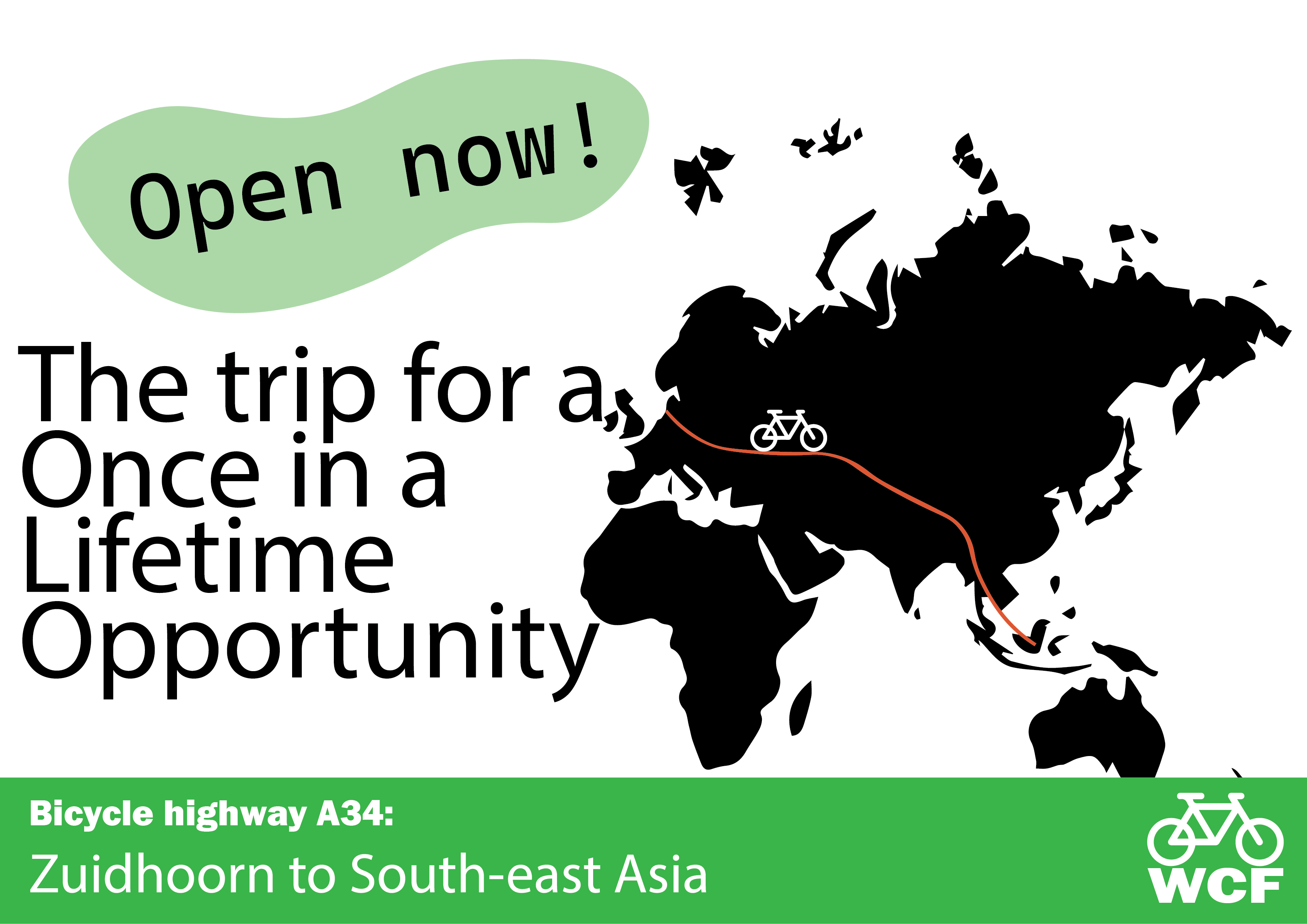A newspaper article from 2038
According to the policy decided at the World Climate Conference in 2027, there should be a significant decrease in flights across the world. The plan consists of a worldwide cycling network across the whole planet. A new institution was consolidated; the World Cycling Foundation. This would be able to facilitate all the different cash flows, visa’s, and regulations. The idea came from a system implemented in the Netherlands called “fietssnelweg”. A new way of looking at travel in between cities [1].
The human desire to travel and explore is something that is present in many of us, in the past, this could be facilitated through high-speed flight. They allowed our ancestors to travel to many places in an unthinkable short time. Lots of research has been done on electric planes, but their feasibility in long-term travel is still unclear [2].
Recently the A34 has opened, the first direct cycling connection from Zuid Hoorn to Southeast Asia. Through analyzing market trends it was determined that there is a large market opportunity for young people trying to find their identity in Southeast Asia. To still be able to fulfill this desire, in 2029 the first plans were made to create the new A34. A journey will take around 100 days, but after that, there is plenty of opportunity to explore.
The worldwide cycling network is the result of a larger paradigm shift that wants to minimize resource insensitivity through our consumerist practices. Wherein travel is considered to be a form of consumption. This could be cultural consumption and/or the need to see all places in a short time. Traveling on its own is not an inherently bad practice, but facilitating it through fast-paced travel has proven to be harmful to the environment [3].
“We are happy to announce the opening of the A34, a new era has started involving high-speed bike travel to the best destinations across the world!”
– CEO WCF
The last finished cycling highway, the A21 from Beijing to Moscow, has sadly not seen much usage. Pending research is now consolidating what changes can be made. The hope is the A34 will offer a more appealing offer since it used to be a widely used route for air traffic. The airport that used to be present in the Netherlands was called Schiphol, but has been remodeled to facilitate the start of many bike routes; it is now called Fietshol. Here now all the goodbyes take place for the long trips ahead.
“It was so lovely seeing my daughter start her journey towards Asia, having such a nice time and traveling to see the most beautiful place on earth. It is so great that you can get there in only 100 days!”
– Dad
This can be affirmed by the recent increase in sales of race bikes, whereas the youth used to save up for a Vespa, a shift has arisen towards high-end race bikes. These can now facilitate all the wild dreams present.
This aligns with the recent shift in design, working towards modes of transport and products that are not reliant on fossil fuels to operate. Many companies are currently exploring how to facilitate this. One major effect is the slowing down of our practices. The travel industry had some very rough years but has now regained the opportunity to facilitate slow travel.
Design has proven to be an important part of this transition, it has allowed slow travelling to become a mainstream thing. The supporting media, bikes, and whole heaps of products facilitate a non-fossil-fuelled future.
Personal perspective
Within our group we are focussing on the practice of relaxing and how it became a consumerist practice. This led me to explore the traveling industry that is currently present, facilitating fast-paced travel across the world. As designers the future perspective is important to consider because we are able to create these new practices through design, eventually facilitating change. Technology has offered great benefits in increasing living standards, but as designers, it is important to consider to what extent the implementation of technology should be beneficial for our daily practices.
Sources
- Fietssnelwegen. (z.d.). https://www.fietssnelwegen.nl/
- Electric flight still a pipe dream. (z.d.). TU Delft. https://www.tudelft.nl/en/delft-outlook/articles/electric-flight-still-a-pipe-dream
- AVIATION: The social, economic and environmental impact of flying. (z.d.). University of York.


